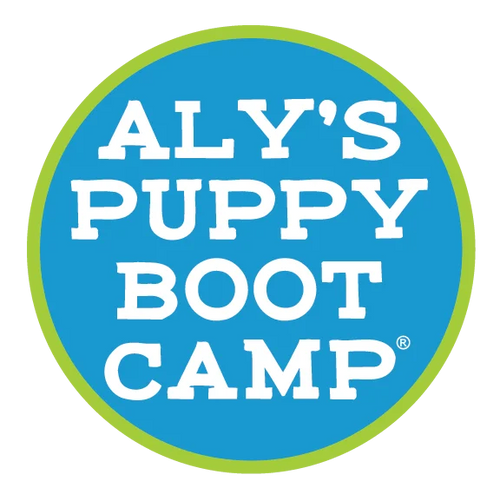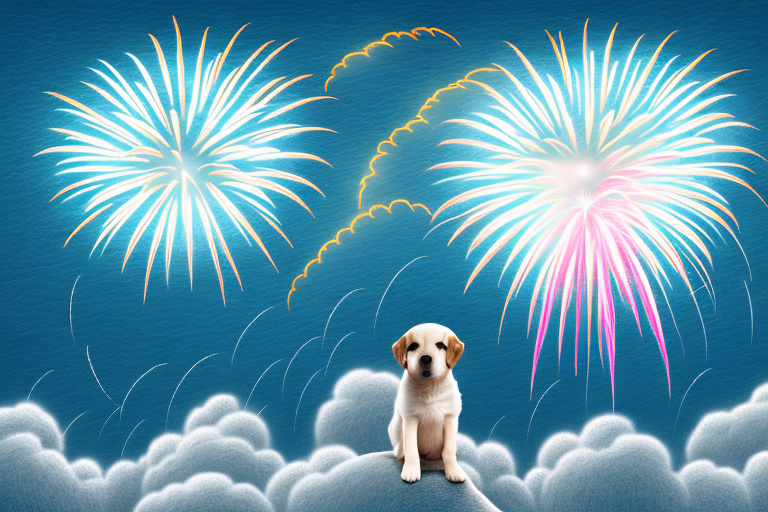Firework and Storm Prep for Puppies and Dogs
With the arrival of the summer season, our skies often become a canvas for both the natural and the man-made — thunderstorms roll in, bringing their signature rumbles, and firework displays paint the night with brilliant colors. While these might be a spectacle for us, for our furry friends, they can be a source of anxiety and fear. Dogs, particularly, might find these loud sounds intimidating, and sudden changes in atmospheric pressure can trigger a stress response. But fear not, with appropriate training and a little patience, we can help our dogs grow accustomed to these noises, enabling them to navigate these situations with ease and confidence. Understanding and preparing for these situations is essential in ensuring the well-being of our dogs. In this article, we will explore the science behind their fear, recognize signs of fear in dogs, and discuss ways to prepare them for fireworks and storms.
Understanding Your Dog's Fear of Fireworks and Storms
Many dogs experience fear and anxiety during fireworks and storms. This fear can be attributed to a combination of factors, including the loud noises, unpredictable nature of the events, and the dog's natural instinct to seek safety. Understanding the science behind their fear can help us empathize with our dogs and find effective ways to manage their anxiety.
The Science Behind the Fear
Studies have shown that dogs have a heightened sensitivity to noise, especially high-pitched sounds like fireworks. This sensitivity is due to their acute hearing abilities, which can be several times more sensitive than human hearing. The sudden loud noises from fireworks can startle dogs, triggering a fear response.
But it's not just the noise that affects dogs during fireworks and storms. Dogs are also sensitive to changes in atmospheric pressure. During storms, the drop in pressure can cause discomfort and anxiety for some dogs. They may exhibit signs of restlessness, panting, and seeking shelter. This sensitivity to atmospheric pressure changes can further intensify their fear and anxiety during these events.
Recognizing Signs of Fear in Your Dog
Dogs may exhibit various signs of fear when exposed to fireworks or storms. These signs can include trembling, hiding, trying to escape, excessive barking, pacing, drooling, and destructive behavior. It's important to recognize these signs and respond accordingly to help calm and reassure your furry friend.
Additionally, some dogs may display more subtle signs of fear, such as yawning, lip licking, and avoiding eye contact. These behaviors can indicate that your dog is feeling anxious and stressed. Being aware of these signs can help you intervene early and provide the necessary support to help your dog cope with their fear.
It's worth noting that fear of fireworks and storms can vary in intensity among dogs. Some may only experience mild anxiety, while others may have severe phobias that require professional intervention. Understanding the individual needs of your dog is crucial in developing an appropriate management plan.
Remember, dogs rely on their human companions for comfort and reassurance. By understanding the science behind their fear and recognizing the signs, you can create a safe and supportive environment for your dog during fireworks and storms. This may include creating a designated safe space, using calming techniques such as music or pheromone diffusers, and consulting with a veterinarian or professional dog trainer for additional guidance.
Preparing Your Dog for Fireworks
Preparing your dog for fireworks involves creating a safe space, using distractions and toys, and utilizing training techniques to desensitize them.
Fireworks can be a source of anxiety and fear for many dogs. The loud noises, bright lights, and unpredictable nature of fireworks can trigger a stress response in our furry friends. It is important to take proactive steps to help your dog feel safe and secure during these events.
Creating a Safe Space
Designate a safe space in your home where your dog can retreat during fireworks. This space should be quiet, comfortable, and familiar to them. Set up their favorite bed or blanket, along with some toys and treats to provide a positive and calming environment.
Consider using soundproofing techniques, such as closing windows and curtains, to minimize the noise and visual stimuli from outside. Playing calming music or white noise can also help mask the sounds of fireworks.
It is important to remember that dogs have different preferences when it comes to their safe spaces. Some dogs may feel more secure in a crate, while others may prefer a cozy corner in a room. Observe your dog's behavior and body language to determine the best location for their safe space.
Using Distractions and Toys
Distractions and interactive toys can help divert your dog's attention away from the fireworks. Fill a Kong toy with treats or peanut butter, or provide them with puzzle toys that require mental stimulation. Engaging their mind with these activities can help reduce their anxiety and keep them occupied during the fireworks.
Another effective distraction technique is to engage your dog in a game or training session. This not only redirects their focus but also reinforces positive behaviors. Use treats and praise to reward them for their participation and make the experience enjoyable for them.
Training Techniques to Desensitize Your Dog
Training techniques, such as desensitization and counter-conditioning, can help your dog become less fearful of fireworks over time. Start by exposing your dog to low-level firework sounds and gradually increase the intensity as they become more comfortable. Pairing the sound of fireworks with positive experiences, such as treats or playtime, can help create positive associations and reduce their fear.
In addition to sound exposure, you can also simulate the visual effects of fireworks using videos or images. By gradually exposing your dog to these visual stimuli while providing positive reinforcement, you can help them become more accustomed to the sights associated with fireworks.
Consistency and patience are key when implementing these training techniques. It is important to start the training well in advance of any fireworks events to allow sufficient time for your dog to adjust and build confidence.
Remember, every dog is unique, and what works for one may not work for another. Pay attention to your dog's individual needs and reactions, and consult with a professional dog trainer or behaviorist if you need additional guidance.
Preparing Your Dog for Storms
Preparing your dog for storms involves recognizing weather changes, comforting them during a storm, and using anxiety wraps and other tools.
Recognizing Weather Changes
Pay attention to weather forecasts and be prepared for approaching storms. Dogs can often sense the changes in atmospheric pressure and other environmental cues before we do. Being aware of these changes can help you anticipate your dog's needs and provide comfort when necessary.
Comforting Your Dog During a Storm
During a storm, it's important to provide comfort and reassurance to your dog. Stay calm and act as a source of security for them. Comforting touches, such as gentle petting or massage, can help alleviate their anxiety. Create a calming environment by closing curtains or blinds and providing a familiar and cozy space for them to seek shelter.
Using Anxiety Wraps and Other Tools
Anxiety wraps, such as Thundershirts, can help reduce anxiety in dogs during storms. These wraps provide gentle pressure that can have a calming effect on dogs. Additionally, there are other tools available, such as pheromone diffusers or natural calming supplements, that can help alleviate anxiety in some dogs. Consult with your veterinarian to determine the best approach for your furry friend.
Professional Help for Severe Cases
In severe cases of fear and anxiety during fireworks and storms, it may be necessary to seek professional help. A veterinary behaviorist or certified dog trainer with experience in fear and anxiety can help develop a tailored plan to address your dog's specific needs.
When to Seek Professional Help
If your dog's fear and anxiety significantly impact their quality of life or pose a risk to their well-being, it's important to seek professional help. Signs that may indicate a need for professional intervention include extreme panic, self-harm, or aggression during fireworks or storms. These professionals can provide guidance, behavior modification techniques, and potentially recommend medication if needed.
Therapies and Treatments Available
Professional help can offer a range of therapies and treatments to help manage your dog's fear and anxiety. These can include desensitization training, behavior modification techniques, and medication if necessary. Each dog's case is unique, and a professional can provide personalized recommendations based on your dog's specific needs and circumstances.
Prevention and Long-Term Strategies
While preparing for fireworks and storms is essential, prevention and long-term strategies are equally important for your dog's well-being.
Training Puppies to Handle Loud Noises
Start early when training puppies to handle loud noises. Expose them to different sounds gradually and reward them for calm behavior. By gradually increasing their exposure to various stimuli, including fireworks and storms, you can help build their resilience and reduce the likelihood of fear developing in the first place. It's important to ensure that their interaction with noise is a positive one — brief sessions coupled with rewards for remaining calm in the face of loud sounds go a long way in making this possible. For example, when you go out to feed your pup, have a handful of kibble, drop the feed bowl, and at the same time scatter some food directly by your side. Your pup will not be so concerned with such a loud noise when he figures out he comes back to you and gets some yummy food!
Another effective strategy is incorporating elements of play in the training process. Play serves not only as a distraction but also aids in establishing positive associations with potentially alarming sounds. Engaging your pup in their favorite games while gradually introducing them to new sounds can help them associate these noises with good times, keeping them relaxed and cheerful. For example, while you are playing his favorite game of Tug-O-War, have a friend banging some pots at a distance. You keep your pup engaged with his favorite game, while the noise happens.
Maintaining a Calm Environment at Home
Establishing a calm environment at home can help reduce stress and anxiety for your dog. Provide them with a consistent routine, regular exercise, and mental stimulation. Creating a predictable and stable environment can help them feel secure and less vulnerable to fear triggers. Finally, you must have a plan of action for the main event, be it a thunderstorm or a firework night. Create a tranquil space for your pup where they can retreat in case they display signs of fear. At Aly’s Puppy Boot Camp, we have our quiet room with crates filled with shredded paper so they can burrow in, great chew toys at the ready, and calming music playing! Should your dog get anxious, we have an arsenal of activities at hand to engage them — their favorite game, a high-value treat, or moving to a quieter area can all help turn their focus away from the intimidating noises. The end goal is to make this an overall positive experience for your dog. This isn't the appropriate moment for a "tough love" approach with your puppy. A final safety note when preparing for fireworks or storms is to prioritize your dog's identification and secure spaces. Having your dog microchipped is crucial in case they become lost or frightened during these events. Additionally, ensure your dog wears a secure collar with your name, address, and phone number for easy identification if they happen to wander off. Lastly, make sure their safe spaces, such as crates or designated rooms, are properly secured to provide a comforting and secure environment during stressful times.
By understanding the science behind their fear, recognizing signs of fear, and implementing these preparation strategies, we can help our puppies and dogs feel safer and more secure during fireworks and storms. Remember, each dog is unique, and finding the right approach may require patience and experimentation. With proper preparation and a little extra care, we can make these events less stressful for our furry friends and strengthen our bond with them.



